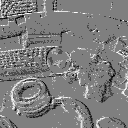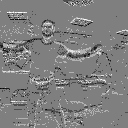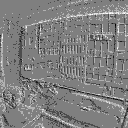CVPR2016 Sequences
We provide here the datasets which have been used in our work [1] for comparison and evaluation. The scenes are taken by a moving DVS camera (rotation+translation) and contain moving objects to highlight the capabilities of our method. All sequences have been taken with the same bias setting for the event camera (see below). The events are provided in a binary-format, which is described below.
 |
Face sequence
Recommended start time: 3.15s |
 |
Ball sequence
Recommended start time: 4.15s |
 |
Jumping sequence
Recommended start time: 4.8s |
 |
HDR sequence
Recommended start time: 4.15s NOTE: Scene contains a monitor with low refresh rate, which causes many events to fire. |
Format
The events are sequentially stored in a binary file. Each event is encoded into 8 bytes, where the first 4 bytes stores the absolute time-stamp in microseconds and the last 4 bytes stores the event-polarity (1 for positive, 0 for negative) and the x and y position in the image. The latter bytes can be processed by using the the following bit-masks:
image_position_x = data & 0x000001FF
image_position_y = (data & 0x0001FE00) >> 9
polarity = (data & 0x00020000) >> 17,
where data is an integer, which contains the last 4 bytes of an event.
DVS128 Biases
A detailed description of the biases can be found on the iniLabs website. We use the same bias settings as used in the jAER project.
| CAS: | 54 |
| INJ_GND: | 1108364 |
| REQ_PD: | 16777215 |
| PU_X: | 8159221 |
| DIFF_OFF: | 132 |
| REQ: | 159147 |
| REFR: | 6 |
| PU_Y: | 16777215 |
| DIFF_ON: | 482443 |
| DIFF: | 30153 |
| FOLL: | 52 |
| PR: | 4 |
| [1] | P.A. Bardow, A.J. Davison, S. Leutenegger, Simultaneous Optical Flow and Intensity Estimation from an Event Camera, Computer Vision and Pattern Recognition (CVPR), 2016 |
